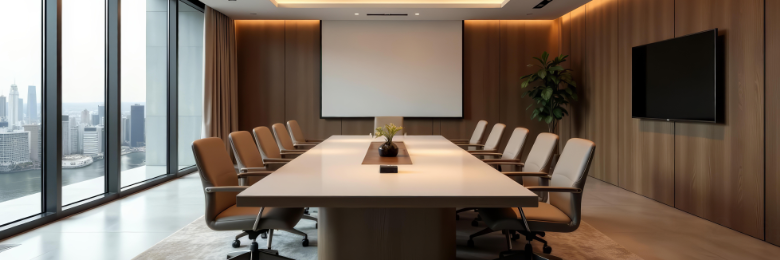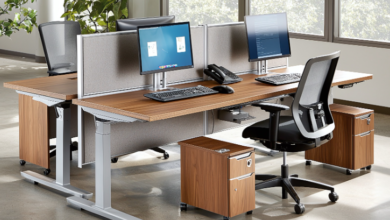Boardroom Inspiration: Spaces That Balance Style and Function

A boardroom is more than just a room for meetings—it’s the central place where decisions are made in any company. It’s where the leaders come together to discuss plans, work out deals, and figure out the future direction of the business. How a boardroom is designed and what it feels like can affect how people talk to each other and work together. The right balance between looking good and being useful ensures the space is impressive and practical.
Where Design Drives Results
A well-planned Boardroom starts with functionality. The table must facilitate open communication, whether among two or twenty people. Central to this is a table large enough to seat everyone comfortably, with ergonomic chairs that marathon sessions of argument do not convert into agony. Lighting is just as significant—ample to maintain focus but subtle enough to be welcoming.
Making technology part of a modern boardroom is also important. Things such as built-in screens, video call setups, and neatly hidden cables help the room run smoothly and keep it tidy and professional. When everything works together without a hitch, everyone can concentrate on the ideas and plans, instead of getting sidetracked by tech problems or messy wires.
Making a Statement with Style
While functionality offers the substance, style gives a boardroom its personality. The look must reflect the company culture and brand, whether sleek and contemporary or warm and traditional. Materials, e.g., polished wood, glass, or metal, give a sense of sophistication, while artwork or plants can bring vibrancy to the space. A well-designed boardroom leaves a lasting impression on clients and visitors, signaling professionalism and attention to detail.
Color schemes also greatly influence the mood of the room. Neutrals provide a calm and focused environment, and vibrant accents will encourage debate and stimulate imagination. Companies can create an inviting and breathtaking boardroom by selecting design elements thoughtfully and striking the ideal balance between aesthetics and function.
Turning the Boardroom into a Collaboration Hub
Boardrooms are most commonly related to formal meetings, but can be structured to facilitate collaboration and idea generation. Adjustable furniture setups, writable walls, or movable tables enable the room to be transformed according to the nature of the assemblies. This helps ensure the boardroom can be used for organized presentations and brainstorming activities.
Creating a comfortable and inclusive environment is key to getting people to work together effectively. The atmosphere comes alive and becomes much more engaging when everyone can easily see what’s going on, get the tools they need, and feel free to share their ideas. Smart design combined with practical features can turn a regular meeting room into a place where teamwork thrives and great new ideas start to grow.
See also: Organization of Business Trips and Travel: Best Practices
Future-Proofing the Space
As workplaces change, boardrooms must keep up and meet new needs—especially since hybrid work models make video conferencing technology a must-have. Adding high-quality cameras, microphones, and dependable internet connections helps make sure everyone, whether in person or joining remotely, can communicate smoothly, which adds value to the space over time. A smart, modern boardroom handles what’s needed and looks ahead to future challenges, mixing practicality, tech, and a clear sense of purpose in its design.




